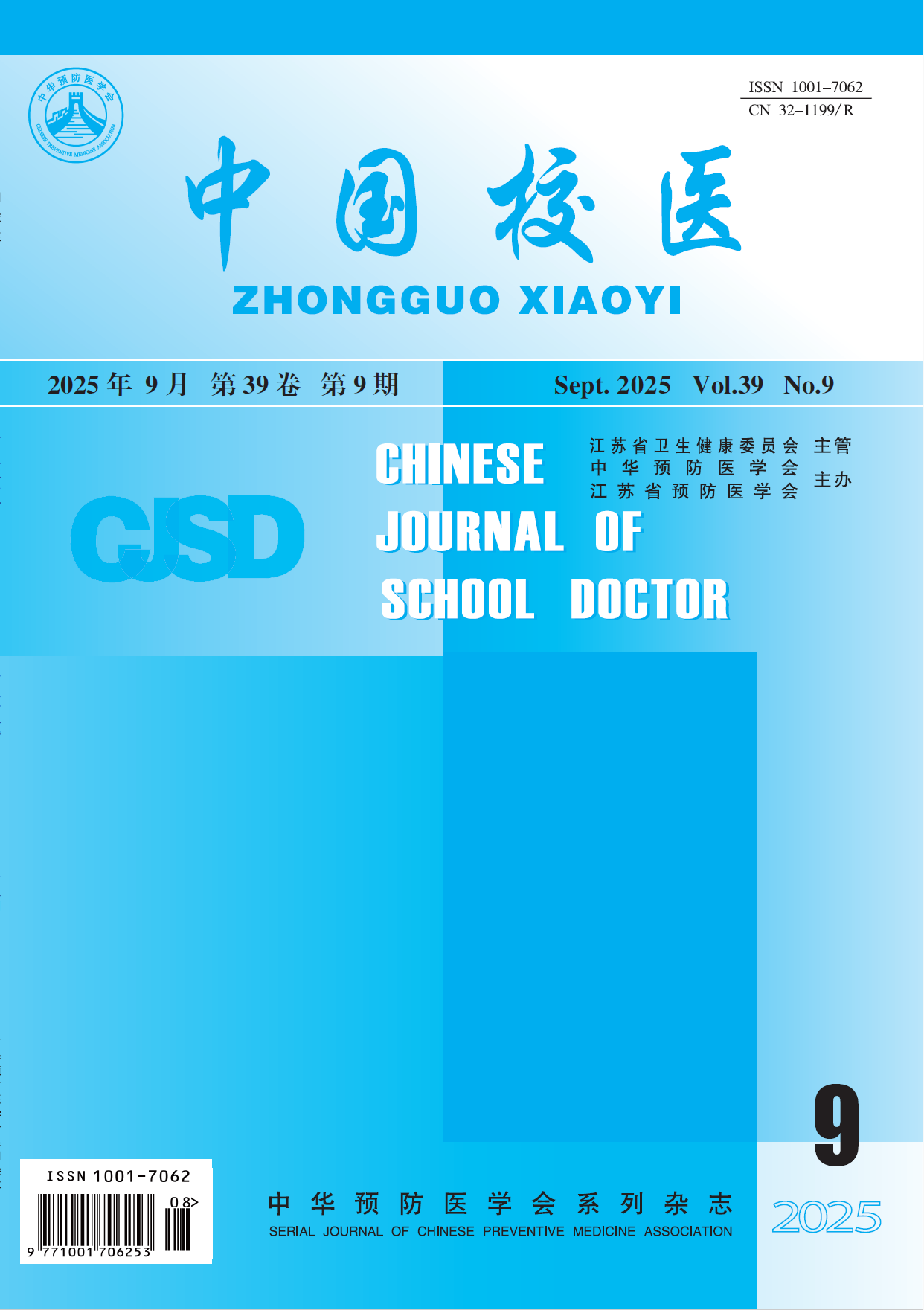● Aticle
LIANG Lili, FANG Hui, MIAO Yulu, ZHANG Fengyun, SUN Xiaodong
Objective To learn the nutritional status and influencing factors of secondary school students in Shanghai, and to provide a basis for the scientific prevention and control strategies. Methods A cross-sectional study design employing multistage cluster random sampling, students from 2 junior schools, 2 high schools, and 1 vocational high school from 16 districts in Shanghai were selected from September to November 2023.Questionnaires were surveyed with the project of “Monitoring and Intervention of Common Diseases and Factors Affecting the Health of Students in Shanghai in 2023” (Partial), which was combined with the physical examinations to collect information on basic information, dietary and exercise behaviors, smoking and drinking behaviors, height and weight. The chi-square test was used for univariate analysis, and the multivariate logistic regression model was used to identify the independent influencing factor on the nutritional status of secondary school students. Results A total of 21 435 valid samples were enrolled, and the detection rates of wasting, overweight, and obesity among secondary school students in Shanghai were 6.97%, 17.80%, and 17.81%, respectively. Significant differences in nutritional status were observed by different genders (χ2=962.20, P<0.001) and school stages (χ2=44.56, P<0.001). Multivariate logistic regression analysis showed that females had lower risks of wasting (OR=0.53, 95%CI:0.48-0.60), overweight (OR=0.47, 95%CI:0.43-0.51), and obesity (OR=0.34, 95%CI:0.32-0.37) compared to males. High school students had a higher risk of wasting than junior high school students (OR=1.35, 95%CI:1.19-1.52). Compared to never drinking sugary beverages in the past 7 days, sugary beverages were a risk factor for obesity in secondary school students both <1 time/day (OR=1.17, 95%CI:1.03-1.32) and≥1 time/day (OR=1.24, 95%CI:1.07-1.44). Compared with no fresh fruit consumption per day, 1 kind/day (OR=1.36, 95%CI:1.01-1.84) and ≥3 kinds/day (OR=1.44, 95%CI:1.05-1.98) had a higher risk of wasting. The 2 kinds/day of fresh fruit increases the risk of overweight (OR=1.25, 95%CI:1.01-1.53). The≥3 kinds/day of fresh fruit consumption was a common risk factor for overweight (OR=1.25, 95%CI:1.00-1.56) and obesity (OR=1.26, 95%CI:1.02-1.56). The risk of wasting was low (OR=0.71, 95%CI:0.57-0.89) for≥1 kind/day dairy consumption in the past 7 days compared to no daily dairy consumption. Compared with no moderate-intensity exercise in the past 7 days, the risk of wasting was lower for 1 to 4 days/week (OR=0.81, 95%CI: 0.70-0.94) and≥4 days/week (OR=0.61, 95%CI: 0.52-0.72) of moderate-intensity exercise; and the risk of obesity was lower for≥4 days/week of moderate-intensity exercise (OR=0.81, 95%CI: 0.72-0.91). Secondary school students who do not drink alcohol have a higher risk of weight loss (OR=1.19, 95%CI: 1.03~1.38) and a lower risk of obesity (OR=0.84, 95%CI: 0.77~0.93). Conclusions Undernutrition and overnutrition coexist in Shanghai secondary school students, in which overweight and obesity are prominent. The nutritional status of this population is correlated with dietary and exercise behavioral habits, and targeted interventions should be taken to effectively improve adolescent nutritional health.

 Editor-in-Chief: Ma Jun
Editor-in-Chief: Ma Jun